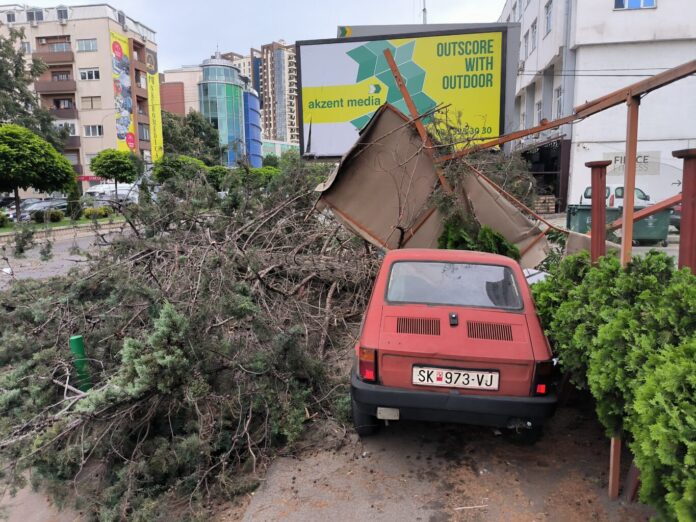floods in the west, drought to the east – Liberation

2024, Record in terms of temperaturesalready seems distant, but she still has things to teach us. Because successive extreme weather events in Europe have literally saw the continent in two blocks, one very humid, the other particularly dry, and the effect of this cleavage persists today. This is what the European Climate State report points out in 2024, published this Tuesday, April 15, 2025 by the Copernicus Service for Climate Change (C3S) and the World Meteorological Organization (OMM).
This document of a hundred pages takes stock of « Strong climatic contrasts » And reveals a Europe with two facets. Because of both intense and prolonged precipitation in 2024, western Europe has experienced one of the most humid ten years ever recorded since 1950. France, Belgium, the Netherlands, Luxembourg and Denmark are among the most copious countries. Spain and Italy have even known their rainy year since 1979.
Result: the ground has remained wet than normal, especially in summer and fall. In Denmark, in some regions, this phenomenon has even reached records. « This situation, associated with precipitation higher than average during the summer, has led to localized floods »recalls the report. Same phenomenon in October in France, in particular In Seine-et-Marne, where Kirk storm caused floods « Angrained by already saturated soils ».
The rains also overloaded the rivers: throughout the year, their flow was higher than normal on the west and the center of Europe. And almost a third of the river network has experienced floods exceeding the « high » threshold. This episode of floods, unprecedented since 2013, is the fifth largest recorded since 1992. « Western Europe has experienced river flows much higher than average, some basins, such as the Thames in the United Kingdom and the Loire in France, having recorded in four months of spring and autumn the highest flows ever recorded in thirty-three years »specifies the report.
Among the significant events is the Boris storm in central Europewhere the strips of water brought the rivers out of their bed in September. « The flows have reached at least twice the average annual maximum of 8,500 km of rivers »including the Danube, notes the report. Eight countries (Germany, Poland, Austria, Hungary, Czech Republic, Slovakia, Romania and Italy) paid the price. A month later, a Mediterranean episode struck Valence, in Spainwith torrential rains that spilled up to 72 cm of water per square meter in twelve hours, causing the death of 232 people.
In total in Europe, the storms and floods of 2024 affected around 413,000 people, causing the death of 335 of them. Climate change in is partly responsiblesince he started to modify the rainy regime: “In recent decades, average precipitation has increased in the North, West, Center and East of Europe. In northern and Eastern Europe, extreme precipitation has also increased. ” And in the future, Europe is one of the regions where the greatest increase in flood risks is provided. Those caused by floods will particularly increase in Western and central Europe, notably points out the report. A devastating year such as 2024 should therefore be more common in the future.
In the south-east of Europe, conversely, particularly hot and dry conditions were maintained for long months. Precipitation was insufficient in spring and summer, while temperatures were particularly extreme. No less than six heat waves, totaling 43 days in furnace, raised in this area between June and September. The report also counts a record of 23 tropical nights (when the temperature does not drop within 20 ° C) during the summer, three times more than the usual average.
The hot weather and the lack of rain caused dry conditions in summer which had not been seen for twelve years. This was felt in the rivers: « Eastern Europe has experienced lower speeds than average during most of the year, with the lowest flows ever recorded in November »note the report. Since then, the situation has not returned to normal and this spring 2025, the soils and rivers in eastern Europe are particularly dry. In the future, under the influence of climate change, the risk of drought will further increase in southeast Europe, specifies the report, adding that « Projects of supply and water demand will therefore become more serious and more persistent ». Celeste Saulo, OMM secretary generalrecalls that « Europe is the continent that heats up the fastest ” and that « Each additional degree fraction of temperature increase is significant because it accentuates the risks for our lives, for savings and for the planet ». It calls for more efforts to adapt to climate change, at a time when half of European cities are not endowed with plans in this area.





:format(webp)/s3/static.nrc.nl/wp-content/uploads/2025/06/05163439/data133217982-f902a2.jpg)

